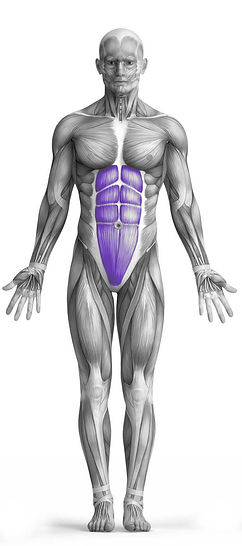Decline Bench Sit Up 101 Video Tutorial
0

Exercise Synopsis
Target Muscle Group
Abs
Secondary Targets
None
Execution
Isolation
Force Type
Pull
Required Equipment
Bodyweight
Fitness Level
Beginner
Variations
None
Alternatives
None
Timer
Hour
Minute
Second
Stopwatch
00:00:00:00
Overview
The Decline Bench Sit-Up is an effective core exercise that primarily targets the abdominal muscles. Performed on a decline bench, it involves lying backward on the bench with the feet anchored and the torso elevated. From this position, you engage the abs to lift the upper body toward the knees, focusing on controlled movements. This exercise emphasizes the upper and lower parts of the abs, offering a challenging workout that engages the core without the need for additional equipment, relying solely on bodyweight for resistance.
How to Perform
Adjust the decline bench to an angle between 30 and 45 degrees. The steeper the incline, the more challenging the exercise will be.
Sit on the bench, positioning your legs under the pads for support and stabilization.
Cross your arms over your chest or place them behind your head for added difficulty. Engage your core as you lean back slowly, ensuring your back almost touches the bench.
Use your abdominal muscles to lift your torso back up to a vertical position, maintaining control throughout the movement.
Lower your body back down in a controlled manner, stopping just before your back touches the bench again.
Repeat the movement for the desired number of reps, focusing on form and using slow, deliberate motions to maximize the engagement of your abdominal muscles.
★ Bonus: For exercises that involve external weights (such as dumbbells, barbells, or machines), the One Rep Max (1RM) calculator can help you estimate your maximum lifting capacity. Use it to track your strength progress and adjust your training for optimal results.
Tips
Avoid lowering your torso too far or raising it too high. Your back should never make contact with the bench, and you should only lift your upper body until it reaches a vertical position.
For an increased challenge, you can incorporate a twist to target your oblique muscles more effectively.
To add more resistance and intensity to the exercise, hold a weight plate or dumbbell across your chest or behind your head as you perform the sit-ups.
How Not to Perform
Avoid Using Momentum: Do not swing or jerk your body to get yourself up. Focus on controlled, smooth movement to keep the emphasis on your abdominal muscles and avoid using momentum, which can reduce the effectiveness of the exercise and increase the risk of injury.
Don’t Arch Your Back: Keep your lower back pressed against the bench throughout the movement. Arching your back can strain the spine and reduce the engagement of your core muscles.
Don’t Overextend: Avoid lowering your upper body too far down. Your back should never touch the bench, as this can lead to unnecessary strain on your lower back. Keep the movement within a controlled range of motion to target your abs effectively.
Avoid Pulling with Your Arms: If you cross your arms over your chest or place them behind your head, make sure you’re not pulling with your arms to lift your body. This can shift the focus away from your abs and place unnecessary strain on your neck and shoulders.
Don’t Rush the Movement: Perform the exercise slowly and deliberately. Rushing through the sit-ups can reduce the time your muscles are under tension, making the exercise less effective for targeting your abs.
Avoid Excessive Repetitions: Instead of doing a large number of quick reps, focus on fewer, more controlled repetitions. This ensures better engagement of the core and minimizes the risk of injury.
Don’t Lift Your Feet: Keep your feet securely anchored under the pads. Lifting your feet off the bench can lead to instability, making it harder to engage your core properly and increasing the risk of losing balance.
Don’t Forget to Breathe: Exhale as you lift your torso up and inhale as you lower it back down. Holding your breath can cause unnecessary tension and make the exercise harder to perform with proper form.
Variations
Variations of fitness exercises refer to different ways of performing a specific exercise or movement to target various muscle groups, intensities, or goals. These variations aim to challenge the body differently, prevent plateaus, and cater to individuals with varying fitness levels.
Alternatives
Alternative exercises in fitness refer to different movements or activities that target similar muscle groups or serve the same training purpose as the primary exercise. These alternative exercises can be used as substitutes when the original exercise is unavailable or challenging to perform due to various reasons such as equipment limitations, injuries, or personal preferences.



